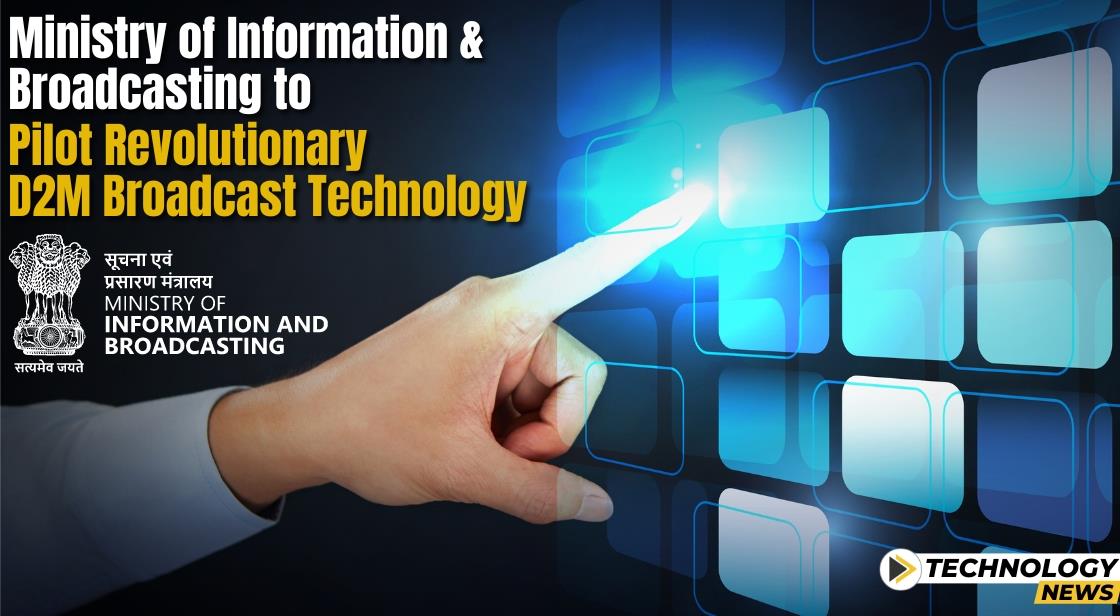Ministry of Information and Broadcasting to Pilot Revolutionary D2M Broadcast Technology

News Synopsis
The Ministry of Information and Broadcasting (I&B) is set to embark on a pilot test for direct-to-mobile (D2M) broadcast transmissions, introducing a groundbreaking technology that seeks to revolutionize multimedia broadcasting without relying on conventional data connectivity. However, industry experts highlight that the initiative is at its early stages and may face challenges from telecom operators and other technology companies.
What is D2M Broadcasting?
D2M broadcasting, as outlined by IIT Kanpur in 2022, envisions a system for multimedia transmission independent of mobile data. Currently used for emergency government alerts, the technology now aims to beam full-fledged TV and content directly to smartphones. This could bridge the digital divide for those who lack internet access, particularly in rural areas.
Pilot Test Plans for D2M Broadcasting Unveiled
The I&B ministry is contemplating a pilot test for D2M broadcasting, a technology outlined in a 2022 paper by the Indian Institute of Technology (IIT) Kanpur. D2M broadcasting presents a mechanism for multimedia broadcasting that doesn't depend on data connectivity.
While it has been utilized for emergency broadcasts of government notifications, the latest proposal envisions bringing television and multimedia content directly to smartphones, providing content-driven services to users without direct access to mobile data.
Information and Broadcasting Secretary Apurva Chandra revealed that discussions on a pilot D2M broadcasting project have initiated, covering 19 cities using Prasar Bharati's digital terrestrial transmission network.
Challenges and Industry Perspectives
Addressing the challenges, Chandra emphasized the need for specific chips in devices to support the technology. He mentioned, "The pilot launch will be the first step—you need a certain chip in devices. We’ve to see how that adoption takes place. Then, we’ve to see how much content is being consumed—we’ll take all of this into consideration before launching at a mass scale. As of now, we’re not mandating any smartphone company or telecom operator, since this is only a pilot."
To facilitate D2M broadcasting, smartphones must incorporate either a specialized chip or an add-on dongle. Saankhya Labs, headquartered in Bengaluru, has unveiled a chip designed for D2M broadcasting, claiming its potential to reach millions of users.
Saankhya Labs CEO Parag Naik stated, "Our plug-and-play dongle, which will also support D2M broadcasts, is already being marketed in the US, and we’ll bring it to India in about six months to one year at around ₹600-800."
However, the plans are in early stages, contingent on the Center's support for a pilot D2M broadcast.
Concerns Raised by Industry Stakeholders
Industry stakeholders, including S. P. Kochhar, Director-General of the Cellular Operators Association of India (Coai), expressed concerns about the technology impacting aspects of a level playing field, spectrum allocation, network integration, and regulatory and cost arbitrage, favoring a public-private partnership model.
A senior telecom industry consultant highlighted potential impacts on value-added services such as content subscriptions, suggesting that D2M broadcasts could encroach upon areas where telecom companies generate revenue.
The Road Ahead: Balancing Progress and Addressing Concerns
As India ventures into D2M's potential, navigating industry concerns and ensuring widespread adoption will be crucial. Finding the right balance between technological advancement and a level playing field for existing players will be key to determining the success of this ambitious project.
You May Like









